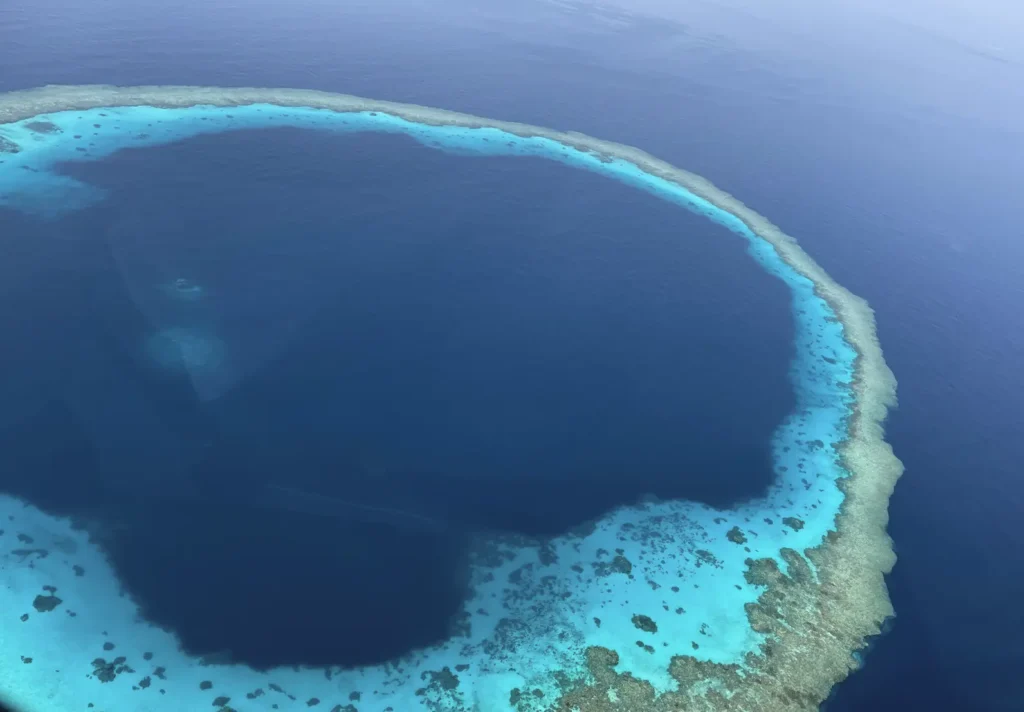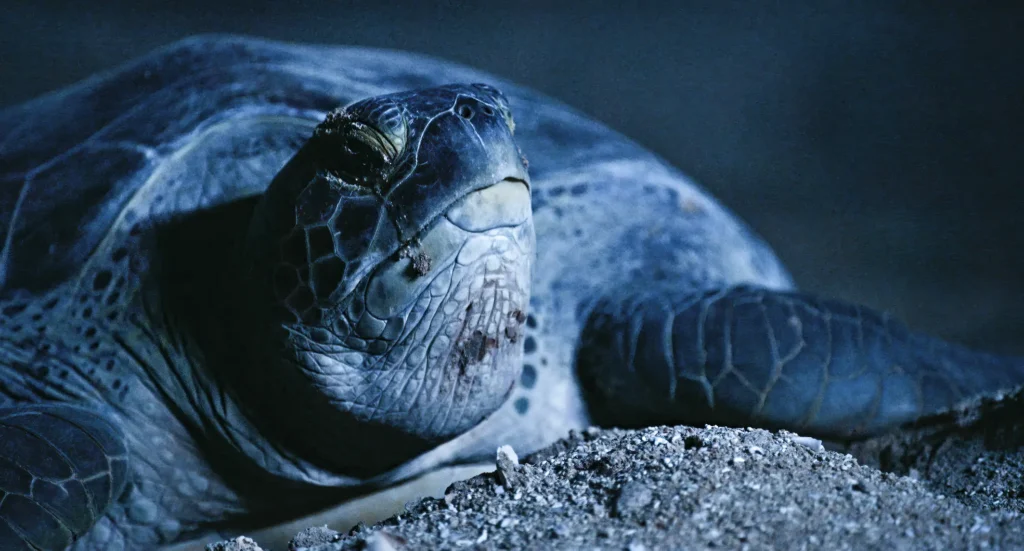Blue Holes
Blue holes are an enchanting natural wonder, attracting curious tourists and captivating scientists alike. From above, they appear as halos of deep blue water, sharply contrasting with the surrounding turquoise sea.
Contrary to the idea that these formations are remnants of ancient celestial impacts, blue holes are actually vast caves, flooded when sea levels rose at the end of the last Ice Age. These azure abysses, found in the heart of the Red Sea, offer refuge to marine life, sheltering them from the harsher elements of the open ocean.

Geological Treasures
Blue holes are geological marvels that have fascinated explorers since their discovery in 1971 by underwater pioneer Jacques Cousteau. Over the years, they have gained fame as natural wonders, beloved by scuba divers and marine researchers.
In the recent Red Sea Decade Expedition, which explored previously uncharted areas of the Red Sea, a remarkable discovery was made—ten blue holes within Saudi Arabian waters. Preliminary studies of two of these formations revealed depths ranging from 47 to 51.5 meters. The National Center for Wildlife (NCW) has now launched comprehensive studies to investigate their geomorphology and biodiversity. This research aims to uncover the mysteries hidden within these underwater formations and shed light on the unique ecosystems they host.
Globally, the deepest blue hole, Taam Ja’ Blue Hole in Chetumal Bay near Mexico and Belize, was measured at over 420 meters in December 2023, setting a new record.
Marvels of the Marine World
With their striking circular shapes and considerable size, blue holes are true wonders of the marine world. These submerged oases host a vibrant array of marine life, including fish, coral reefs, sponges, and turtles. Their deep, dark blue color is caused by sunlight refracting through their narrow openings and reflecting off the depths below.
In Saudi Arabia, blue holes account for nine percent of the marine areas designated for protection, covering 20,000 square kilometers. The Kingdom has an ambitious goal to increase the percentage of marine protected areas from 5.5% to 14.5%, as part of the 30% Marine Protected Areas Roadmap. This effort highlights the importance of conservation and the role blue holes play in protecting marine biodiversity.
These ecosystems are under threat from human activities, such as unregulated fishing, making their preservation crucial. Blue holes not only serve as prime tourist destinations but also offer significant research opportunities into marine biodiversity. Globally, blue holes draw thousands of visitors each year, with famous sites in Belize, the Bahamas, Palau, and Egypt. Tourism related to these sites supports local economies and creates numerous jobs.

A Safe Haven for Marine Life
The Red Sea’s blue holes provide an exceptional refuge for dolphins, offering them sanctuary from predators in a way rarely seen elsewhere in the world.
Recognizing the uniqueness of these ecosystems, NCW is spearheading a comprehensive initiative to map and study the blue holes in the Red Sea. Collaborating with international researchers, NCW is conducting detailed 3D mapping and documenting the rich biodiversity within these ecosystems.
Plans are underway to designate these blue holes as key marine protected areas within the framework of Vision 2030. This designation will emphasize their critical importance as stable habitats for coral reefs, sanctuaries for marine mammals, and invaluable sites for scientific research.
Preserving the Future of Blue Holes
To ensure effective conservation, it is essential to assess the threats facing these ecosystems. By identifying risks and adopting global best practices for management, we can better protect these underwater sanctuaries for future generations.
The seclusion and unique environmental conditions of blue holes make them hotspots for microbial biodiversity, typically located in low-lying coastal regions.
NCW, in collaboration with King Abdullah University of Science and Technology (KAUST), is undertaking extensive studies of the blue holes in the Red Sea. These research initiatives will focus on exploring the environmental characteristics, biodiversity, and potential threats to these vital ecosystems. The goal is to implement effective conservation strategies that safeguard these extraordinary natural resources for years to come.




